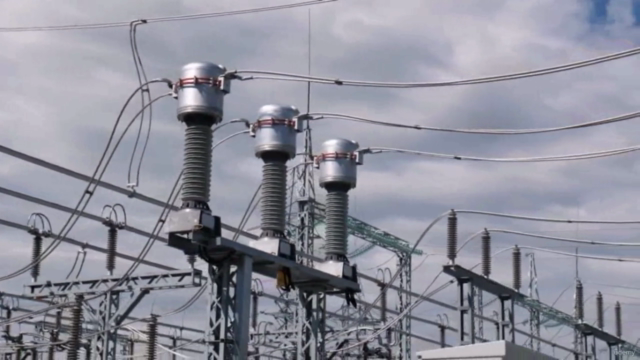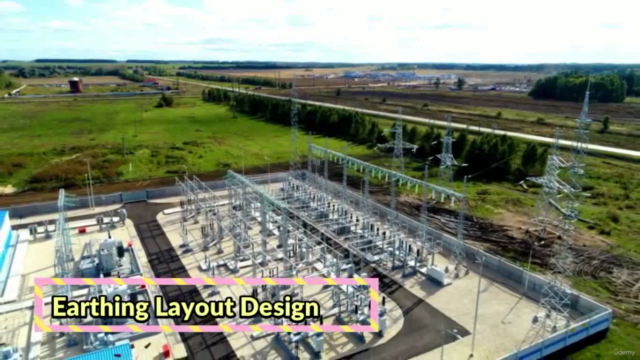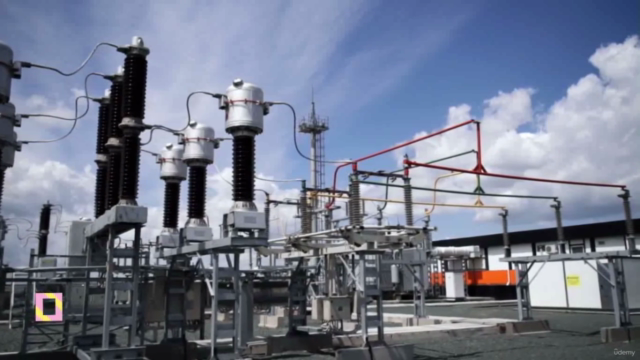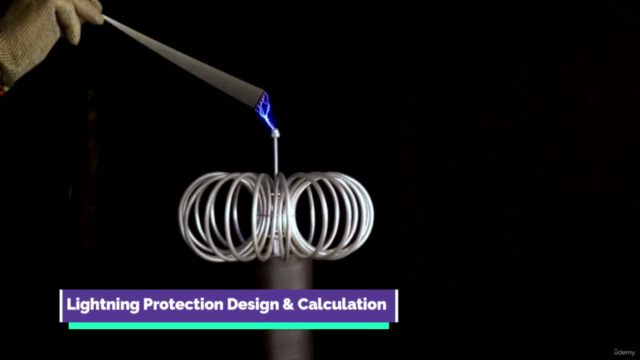Earthing Design Calculation, Lightning Protection System

Why take this course?
🚀 Mastering Earthing Design & Lightning Protection: A Comprehensive Online Course
Course Headline:
🔧 Risk Assessment Analysis, Lightning Protection Design, Calculation, and Layout
Course Description:
What is Earthing or Grounding? 🌍
Earthing, also known as grounding, is a critical safety measure in electrical systems. It's the process that ensures a safe path for electrical currents to follow if there's an insulation failure, preventing people from receiving harmful shocks. The "Earth" pin in your electrical plug is the ground connection, which provides this safe pathway. 💥
Earthing design involves using a low-resistance wire to connect the non-current-carrying parts of electrical equipment to the Earth, effectively creating a reliable path for leakage currents and short circuit currents to safely dissipate into the ground, with zero potential, thus protecting both human life and the integrity of electrical systems.
Why is Earthing Necessary? ❓
Earthing is essential for:
- Human Safety: Protecting individuals from electric shock.
- Safety of Electrical Equipment: Preventing damage to equipment due to faults or surges.
- Protection of Buildings from Lightning: Mitigating the risks associated with lightning strikes.
Types of Earthing Methods: 🏗️
The course will delve into various earthing methods, including:
- Plate Earthing
- Pipe Earthing
- Rod Earthing
- Water Main Method
What is a Lightning Protection System? 🌩️
A lightning protection system is a structured network designed to intercept lightning strikes and safely conduct the electrical currents to the ground. These systems are crucial for protecting buildings, people, and sensitive electronics from the destructive power of lightning. They consist of lightning rods, conductors, and an array of grounding elements that work together to redirect the strike's energy away from the structure.
Course Structure:
Module 1: Fundamentals of Earthing Design
- The science behind earthing and its importance in electrical safety.
- Types of earth electrodes and their applications.
- Soil resistivity and its impact on earthing design.
Module 2: Advanced Earthing Calculations
- Mathematical calculations for earthing layouts.
- Earth fault loop impedance calculations.
- Protective device coordination.
Module 3: Lightning Protection System (LPS) Design
- The physics of lightning and its effects on structures.
- Components of a typical LPS.
- Design principles for effective lightning protection.
Module 4: Risk Assessment and Safety Standards
- Understanding the risks associated with lightning strikes.
- Conducting risk assessments for various environments.
- Adherence to international safety standards like IEEE, NFPA, and BS.
Module 5: Real-world Applications & Case Studies
- Analysis of real-life earthing design failures and successes.
- Case studies on effective lightning protection systems.
- Best practices for earthing in different sectors like industrial, commercial, and residential.
Who Should Take This Course? 👩🏫👨💼
This course is ideal for:
- Electrical Engineers looking to specialize in earthing design and lightning protection systems.
- Architects who want to incorporate effective LPS into their designs.
- Safety Professionals aiming to ensure compliance with international safety standards.
- Building Contractors needing to understand the technical aspects of LPS for construction projects.
- Energy Managers seeking to enhance the reliability and safety of their systems.
Enroll now to gain expertise in earthing design calculations, lightning protection system design, and much more. Transform your knowledge and skills with this comprehensive online course led by industry expert Rajendra Singh! 🎓✨
Course Gallery




Loading charts...